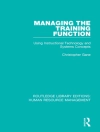Available Open Access under CC-BY-NC licence.
While the debate on regulating prostitution usually focuses on national policy, it is local policy measures that have the most impact on the ground. This book is the first to offer a detailed analysis of the design and implementation of prostitution policy at the local level and carefully situates local policy practices in national policy making and transnational trends in labour migration and exploitation.
Based on detailed comparative research in Austria and the Netherlands, and bringing in experiences in countries such as New Zealand and Sweden, it analyses the policy instruments employed by local administrators to control prostitution and sex workers. Bridging the gap between theory and policy, emphasizing the multilevel nature of prostitution policy, while also highlighting more effective policies on prostitution, migration and labour exploitation, this unique book fills a gap in the literature on this contentious and important social issue.
Spis treści
Introduction
Challenges of prostitution policy
The local governance of prostitution: regulatory drift and implementation capture
The national governance of prostitution: political rationality and the politics of discourse
Understanding the policy field: migration, prostitution, trafficking and exploitation
Prostitution policy beyond trafficking: collaborative governance in prostitution
Summary and conclusions
O autorze
Sietske Altink has an MA in philosophy and was a researcher at the comparative study of prostitution policy. Since the 1980s she has researched prostitution (for the ministry of social affairs), worked with migrants at the Foundation against Trafficking in Women and managed the Dutch NGO ‘ De Rode Draad” (Red Thread). She is a key figure in the prostitution debate in the Netherlands and is sought out for her wide knowledge of prostitution policy for lectures, presentations and media appearances.












